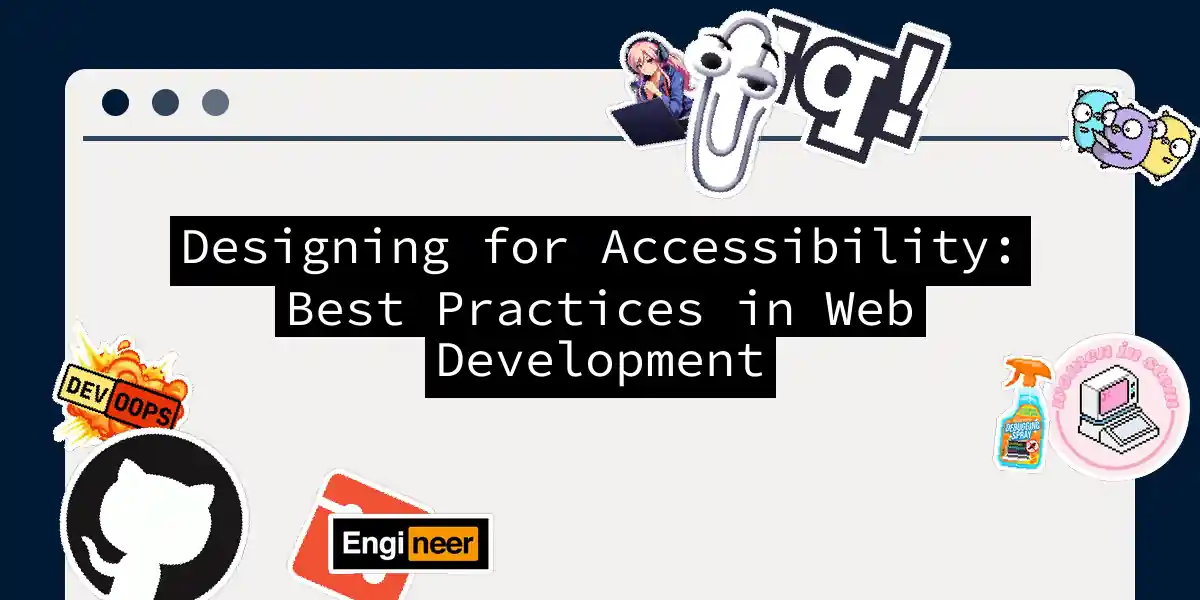Understanding Web Accessibility
When we talk about web accessibility, we’re not just discussing a set of guidelines; we’re talking about creating an inclusive web that everyone can use, regardless of their abilities. Imagine a world where every website is like a welcoming home, where everyone can navigate comfortably, whether they use a screen reader, have color blindness, or need to use a keyboard only.
1. Prepare Your Website for Screen Readers
Screen readers are like the GPS for visually impaired users, guiding them through your website by converting text into speech or braille. Here are a few steps to make your site screen reader-friendly:
- Define the Site’s Language: Use the
langattribute in your HTML to specify the language of your website. This helps screen readers pronounce words correctly.<html lang="en"> - Logical Site Structure: Ensure your site’s structure is logical and easy to navigate. This can be achieved by using semantic HTML elements like
header,nav,main,section, andfooter.<body> <header> <nav> <!-- Navigation links --> </nav> </header> <main> <!-- Main content --> </main> <footer> <!-- Footer content --> </footer> </body> - Alt Text for Images: Add alternative text to your images so screen readers can describe them to users.
<img src="image.jpg" alt="A description of the image">
2. Use Accessible Color Contrasts
Color contrast is crucial for users with vision impairments. Here’s how you can ensure your colors are accessible:
- Contrast Ratios: Aim for a contrast ratio of 4.5:1 for normal text and 3:1 for large text (18 points or larger)[4].
- Tools: Use online tools like the WebAim Contrast Checker to check your color contrast compliance.
- Avoid Grey Scaling: Steer clear of grey scaling, as it can make text hard to read.
3. Choose Clear Fonts
Fonts can make or break the readability of your website. Here are some tips:
- Familiar Fonts: Use fonts that are easy to read, such as Times New Roman, Verdana, Arial, Tahoma, Helvetica, and Calibri[1].
- Text Elements: Use text elements instead of images for content to ensure it can be scaled and read by screen readers.
- High Contrast: Ensure the font color has a high contrast with the background.
4. Ensure Keyboard Accessibility
Not everyone uses a mouse to navigate. Here’s how to make your site keyboard-friendly:
- Tab Order: Ensure that the tab order of your elements is logical and follows the visual order of your page.
- Focusable Elements: Make sure all interactive elements (like buttons and links) are focusable with the keyboard.
<button onclick="myFunction()">Click me</button> - Avoid Div Buttons: Do not use
<div>elements to mimic buttons, as they lack the inherent accessibility features of actual<button>elements[5].
5. Make Videos and Audio Accessible
Multimedia content needs to be accessible too:
- Captions and Subtitles: Provide captions and subtitles for videos to help users who are deaf or hard of hearing.
- Transcripts: Offer transcripts for audio content to help users who prefer to read or need to use screen readers.
- Audio Descriptions: Provide audio descriptions for visually impaired users.
6. Use Semantic HTML
Semantic HTML helps screen readers and other assistive technologies understand the structure of your page:
- Headings: Use
h1,h2,h3, etc., to define headings in a logical order.<h1>Main Heading</h1> <h2>Subheading</h2> <h3>Sub-subheading</h3> - Tables: Use table captions and scope attributes to help screen readers associate table headers with the data.
<table> <caption>Table Caption</caption> <thead> <tr> <th scope="col">Column 1</th> <th scope="col">Column 2</th> </tr> </thead> <tbody> <tr> <td>Cell 1</td> <td>Cell 2</td> </tr> </tbody> </table>
7. Write Descriptive Link Text
Links should be clear and descriptive:
- Avoid Generic Text: Instead of using “Click here,” use descriptive text that tells the user where the link will take them.
<a href="https://example.com">Learn more about our services</a>
8. Add a Website Accessibility Statement
An accessibility statement shows your commitment to accessibility and provides a point of contact for users to report any issues:
- Include Contact Information: Provide an email address or form where users can report accessibility issues.
<p>If you encounter any accessibility issues, please contact us at <a href="mailto:[email protected]">[email protected]</a>.</p>
Flowchart for Accessibility Checklist
Here’s a simple flowchart to help you check your website’s accessibility:
Conclusion
Designing for accessibility is not just about following guidelines; it’s about creating a web that is inclusive and welcoming to everyone. By following these best practices, you can ensure that your website is accessible, user-friendly, and compliant with web accessibility standards. Remember, accessibility is not a feature, it’s a fundamental aspect of good web design. So, go ahead and make your website a home for everyone – it’s the right thing to do, and it’s good business too
